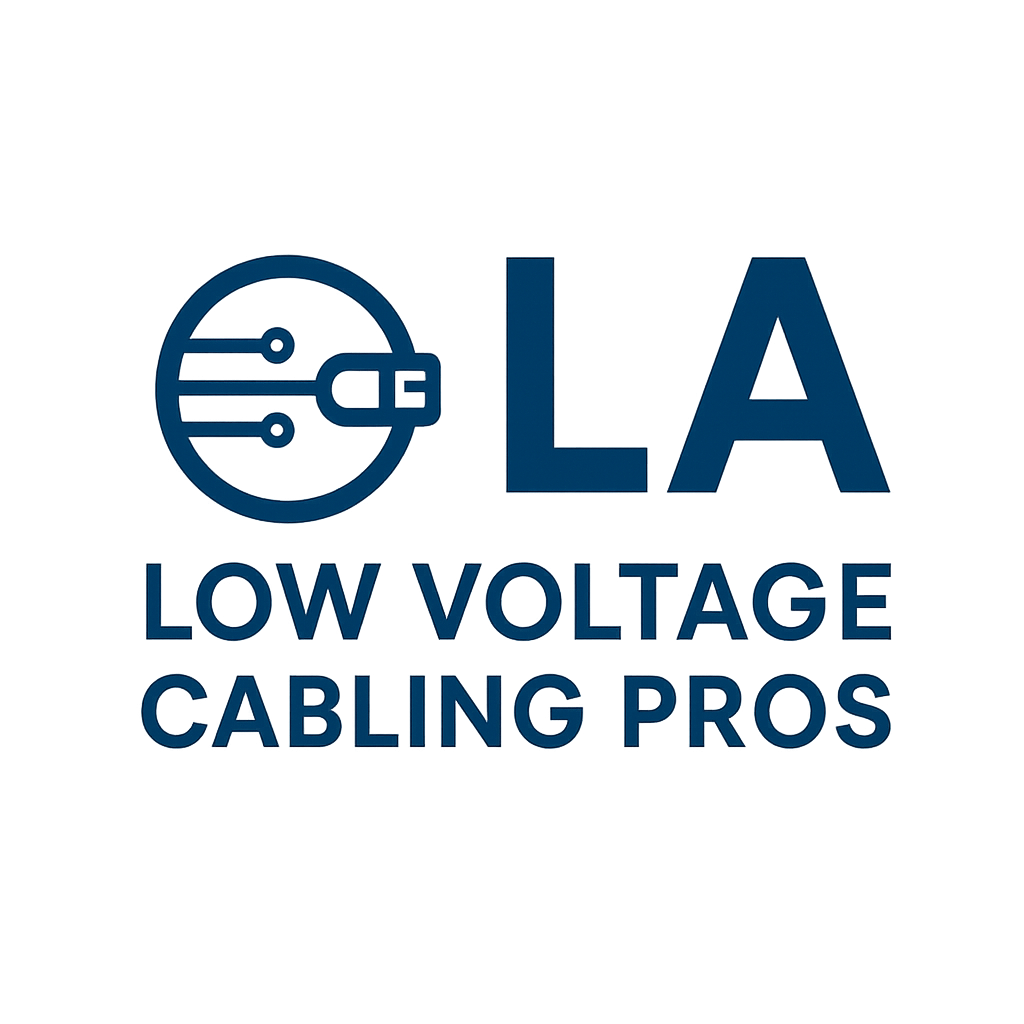Los Angeles Building Codes for Low Voltage: What You Need to Know Before Installation
If you’re planning a low voltage installation in Los Angeles, it’s important to understand the local building codes before you start. Whether you’re setting up security cameras, structured cabling, alarm systems, or data networks, complying with the Los Angeles Department of Building and Safety (LADBS) regulations ensures your system is safe, legal, and up to standard.
Low voltage systems are essential for modern buildings, but even though they operate at a lower current, they still need to follow specific installation and permitting rules in California. This guide breaks down everything you need to know about Los Angeles low voltage building codes, permits, and best practices. Our team of certified low voltage contractors in Los Angeles ensures every installation follows local codes and safety standards.
What Is a Low Voltage System?
Low voltage refers to electrical systems that operate at 50 volts or less, such as:
- Security camera and CCTV systems
- Network and structured cabling
- Audio and video systems
- Access control and intercoms
- Alarm and fire systems
- Smart home and automation setups
While these systems use less power than traditional electrical wiring, they must still be installed safely to prevent hazards like interference, overloading, or fire risks — and that’s where local codes and regulations come in.
Who Regulates Low Voltage Installations in Los Angeles
Low voltage wiring in Los Angeles falls under the jurisdiction of the Los Angeles Department of Building and Safety (LADBS). Installers are required to follow:
- California Electrical Code (CEC)
- Los Angeles Building Code (LABC)
- National Electrical Code (NEC) Article 725 for power-limited circuits
- Title 24 for energy efficiency and safety compliance
These codes ensure that all installations are properly designed, grounded, and separated from high-voltage systems.
Do You Need a Permit for Low Voltage Work in Los Angeles?
Yes, in most cases, you do. Any new low voltage system installation or significant modification requires a low voltage electrical permit from LADBS. This includes wiring for CCTV systems, data networks, alarms, and communication lines.
Permits are required when:
- Installing new cabling infrastructure
- Adding a new system (CCTV, alarm, access control, etc.)
- Making significant upgrades or remodels
- Running wires through walls, ceilings, or conduit
However, minor repairs or direct equipment replacements often don’t need a permit. Always verify your project scope with LADBS or a licensed low voltage contractor before starting.
Licensing Requirements for Low Voltage Contractors
In California, anyone performing low voltage installation work must hold a valid C-7 Low Voltage Systems Contractor License, issued by the California Contractors State License Board (CSLB).
This license covers systems such as:
- Communication and data cabling (Ethernet, fiber)
- Fire alarm and security systems
- Intercom, sound, and video systems
- Access control and automation
Hiring a licensed C-7 contractor ensures your project meets California code requirements and passes inspection without issues. After installation, it’s crucial to verify connections and performance. Learn the proper steps in our guide on how to test network cabling.
Key Low Voltage Code Requirements in Los Angeles
When planning your installation, here are some of the most important code rules to follow:
- Cable Type and Rating – Use UL-listed cables rated for the environment (plenum, riser, outdoor, etc.).
- Separation from Power Lines – Maintain required distance from high-voltage wiring to reduce interference and prevent hazards.
- Proper Conduit and Pathways – Follow NEC Article 800 and TIA-569 standards for routing and cable management.
- Firestopping – Seal wall and floor penetrations with fire-rated materials.
- Labeling and Documentation – All low voltage circuits must be properly labeled and documented for inspection.
- Grounding and Bonding – All metallic components must be properly grounded to prevent electrical faults.
- Accessibility for Maintenance – Junction boxes, patch panels, and terminations must remain accessible for service and inspection.
These standards protect both your property and the network’s performance.
Common Mistakes to Avoid
Even experienced installers can make errors that lead to failed inspections or future problems. Avoid:
- Running data cables too close to power lines
- Using non-rated cables in plenum or riser spaces
- Failing to secure permits before installation
- Ignoring labeling and documentation rules
- Using unlicensed contractors
Taking time to plan properly and follow local requirements saves money and prevents rework later.
Why Work with a Licensed Low Voltage Contractor in Los Angeles
A certified low voltage installer not only understands technical standards but also knows how to navigate LADBS permit processes efficiently. They handle:
- Permit applications and inspections
- Code-compliant cable routing
- Testing, labeling, and documentation
- Integration with existing systems
Working with professionals ensures your system is safe, reliable, and fully compliant with local laws.
Keeping Up with Code Updates
Los Angeles regularly updates its building and electrical codes to stay aligned with California and national standards. The California Electrical Code (CEC) is updated every three years, and the Los Angeles Building Code may adopt additional local amendments.
Staying current ensures your installation remains compliant and avoids costly retrofits in the future. Licensed installers typically stay updated on these changes, making them your best resource for long-term compliance.
Upgrade and Stay Compliant Today
If you’re planning a low voltage installation in Los Angeles, make sure it’s done right — safely, legally, and up to code. Professional contractors understand the latest building code requirements and can help design, install, and certify your system for maximum performance and compliance. Anyone handling low voltage installations in California should understand licensing requirements. Here’s a complete guide on how to get a low voltage license in California.
Contact a licensed Los Angeles low voltage contractor today to start your project with confidence and peace of mind.
